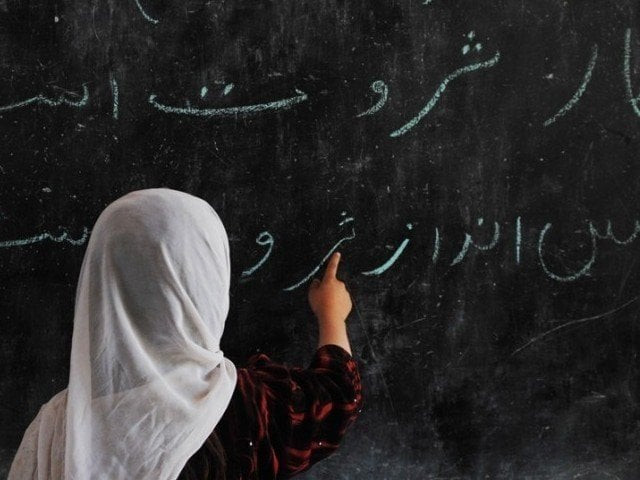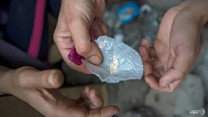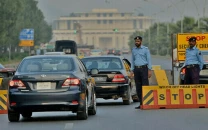Report shines light on Sindh’s poor performance in education
12,600 schools closed while 23,355 teachers have not been reporting for duties

PHOTO: FILE
Statistics regarding enrolment rates of primary school children lack improvement, according to a recent report prepared by an educational performance watchdog. The report provided information of 43,000 of the 48,677 government schools in the province and was issued by the director-general of monitoring and evaluation.
In an alarming revelation, the report mentioned that over 12,600 schools remain shut while 23,355 of the 123,356 teachers have not been reporting for their duties. The absent teaching staff includes 1,773 teachers who have been on leave for a while and another 2,000 teachers who have been identified as ‘ghost teachers’. Of the ghost teachers, 6.7% are posted in Jamshoro, 5.2% in Tando Muhammad Khan and 3.8% in Shikarpur.
According to the report, of the 3.99 million students enrolled in government schools across the province, only 1.64 million are currently attending school, while 1.45 million remain permanently absent. In addition to this, over 8,000 of the 36,000 non-teaching staff at public schools are virtually non-existent and another 657 are working as ‘ghost staff’.
‘Quality education essential for progress’
The public education sector also suffers from an acute shortage of teachers at over 17,000 schools. The report states 339 schools in Karachi, 1,981 in Tharparkar, 1,625 in Badin, 1,422 in Khairpur, 1,253 in Sanghar, 1,078 in Umerkot, 1,034 in Shaheed Benezirabad, 967 in Mirpurkhas, 900 in Naushero Feroz and several other districts of Sindh have only one teacher for the entire school.
The situation is also not good on the infrastructure side. According to the report, 19,000 schools of the province lack boundary walls, 23,600 schools are without furniture, 12,381 without electricity, 20,600 have no bathrooms and 14,263 lack drinking water facilities.
The report makes several recommendations which include effective accountability, supervision of monitory and evaluation committees and tighter controls and actions by district education officers and directors against absent teachers and staff.
The report also recommends daily updating of data pertaining to teachers and administrative staff, including their appointments, transfers, terminations and retirements to help authorities come up with more accurate and realistic statistics and performance measures. The report also recommends that the authorities remove the count of temporary and makeshift schools from the database so that proper monitoring and evaluation can be done.
Rural barriers: Women urged to attain education
District-wise statistical data of schools should be uploaded through the database centre. Monitoring and Evaluation Director-General Syed Khalid Shah said that the monitoring and evaluation department came into existence with the cooperation of the school education and literacy department and global partnership for education in 2015 with the aim to monitor and evaluate public schools in Sindh. He said that our chief monitoring officer visits one school two to three times a month and then finalises its data. Our work is only to identify shortcomings, while it is the responsibility of the education department to take action, said Shah.
We prepare reports on a school's condition, students' enrolment, presence of teaching staff and attendance of non-teaching staff including various other aspects, he explained.
Education Secretary Iqbal Durrani told Express News that the names of ghost employees have been published in newspapers and the employees have been directed to explain their positions within 15 days or else their appointments will be cancelled.
Regarding the infrastructure of schools, he said that at the moment we are focusing on 4,500 schools and they are being made into model schools because most of the students are enrolled at these schools, he said.
'Stop tinkering with education in Sindh'
Answering a question, Durrani said that to update the database, a list of ghost employees has been provided to the district officers in case some have retired and the information has not been updated. Involving the officers will give a clearer picture of the situation on the ground.
Experts say that in the past, billions of rupees were allocated for the education sector but positive results were not attained, due to which there is no effective system for monitoring of developmental funds. For the improvement of the education system, an effective and reliable system is desperately needed.











1729471601-0/image-(8)1729471601-0-208x130.webp)






COMMENTS
Comments are moderated and generally will be posted if they are on-topic and not abusive.
For more information, please see our Comments FAQ